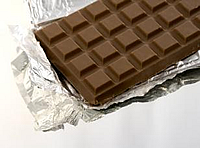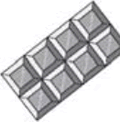- National Curriculum Tool
- Year 6 - Fractions (including decimals and percentages)
Year 6 - Fractions (including decimals and percentages)
New Curriculum
- use common factors to simplify fractions; use common multiples to express fractions in the same denomination
- compare and order fractions, including fractions >1
- add and subtract fractions with different denominators and mixed numbers, using the concept of equivalent fractions
- multiply simple pairs of proper fractions, writing the answer in its simplest form [for example, ¼ × ½ = 1⁄8]
- divide proper fractions by whole numbers [for example, 1⁄3 ÷ 2 = 1⁄6]
- associate a fraction with division and calculate decimal fraction equivalents [for example, 0.375] for a simple fraction [for example, 3⁄8]
- identify the value of each digit in numbers given to three decimal places and multiply and divide numbers by 10, 100 and 1000 giving answers up to three decimal places
- multiply one-digit numbers with up to two decimal places by whole numbers
- use written division methods in cases where the answer has up to two decimal places.
- solve problems which require answers to be rounded to specified degrees of accuracy
- recall and use equivalences between simple fractions, decimals and percentages including in different contexts.
Non-Statutory Guidance
Pupils should practise, use and understand the addition and subtraction of fractions with different denominators by identifying equivalent fractions with the same denominator. They should start with fractions where the denominator of one fraction is a multiple of the other (for example,½ + ⅛ = ⅝ ) and progress to varied and increasingly complex problems.
Pupils should use a variety of images to support their understanding of multiplication with fractions. This follows earlier work about fractions as operators (fractions of), as numbers, and as equal parts of objects, for example as parts of a rectangle.
Pupils use their understanding of the relationship between unit fractions and division to work backwards by multiplying a quantity that represents a unit fraction to find the whole quantity (for example, if ¼ of a length is 36cm, then the whole length is 36 × 4 = 144cm).
They practise calculations with simple fractions and decimal fraction equivalents to aid fluency, including listing equivalent fractions to identify fractions with common denominators.
Pupils can explore and make conjectures about converting a simple fraction to a decimal fraction (for example, 3 ÷ 8 = 0.375). For simple fractions with recurring decimal equivalents, pupils learn about rounding the decimal to three decimal places, or other appropriate approximations depending on the context. Pupils multiply and divide numbers with up to two decimal places by one-digit and two-digit whole numbers. Pupils multiply decimals by whole numbers, starting with the simplest cases, such as 0.4 × 2 = 0.8, and in practical contexts, such as measures and money.
Pupils are introduced to the division of decimal numbers by one-digit whole number, initially, in practical contexts involving measures and money. They recognise division calculations as the inverse of multiplication.
Pupils also develop their skills of rounding and estimating as a means of predicting and checking the order of magnitude of their answers to decimal calculations. This includes rounding answers to a specified degree of accuracy and checking the reasonableness of their answers.




